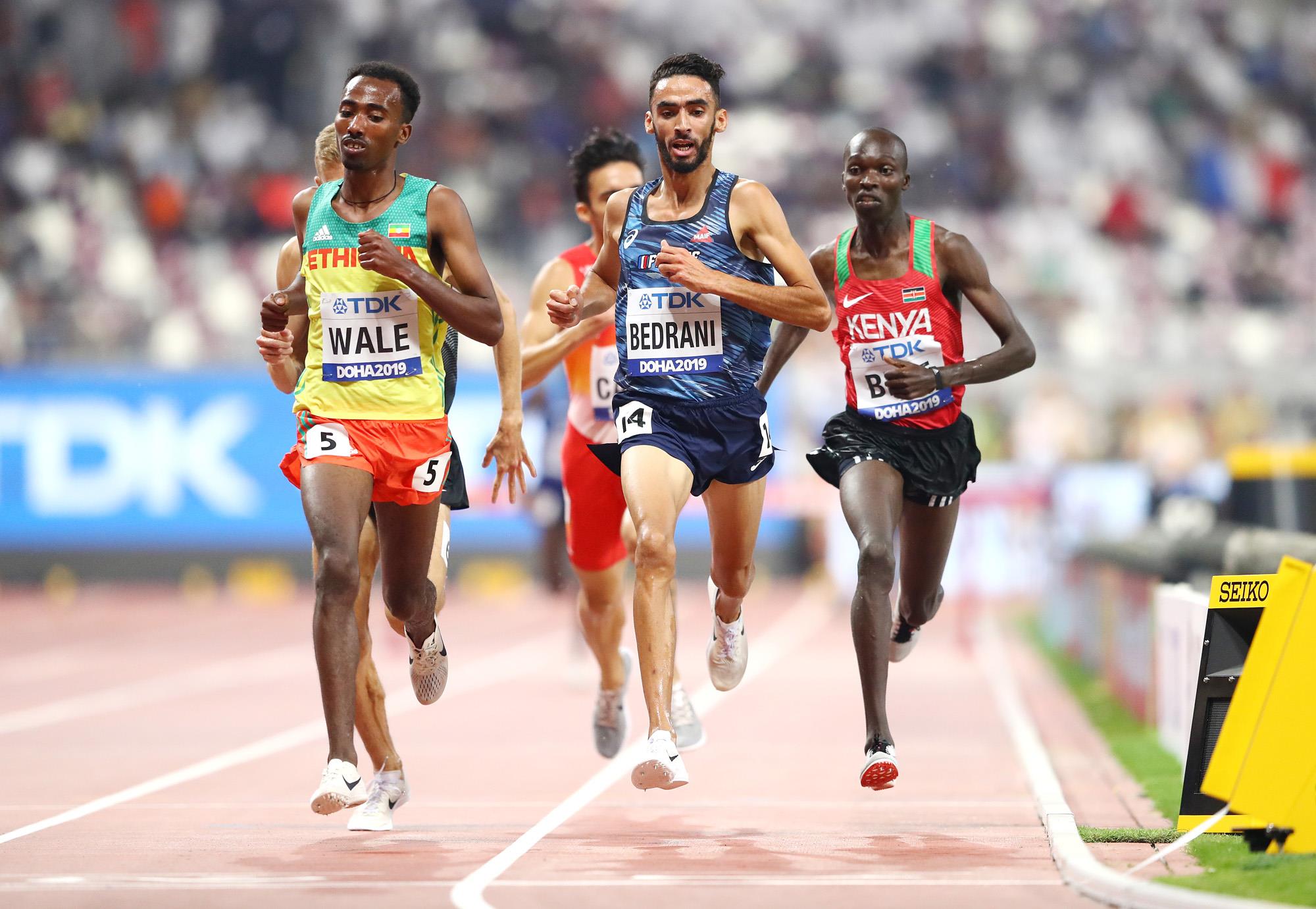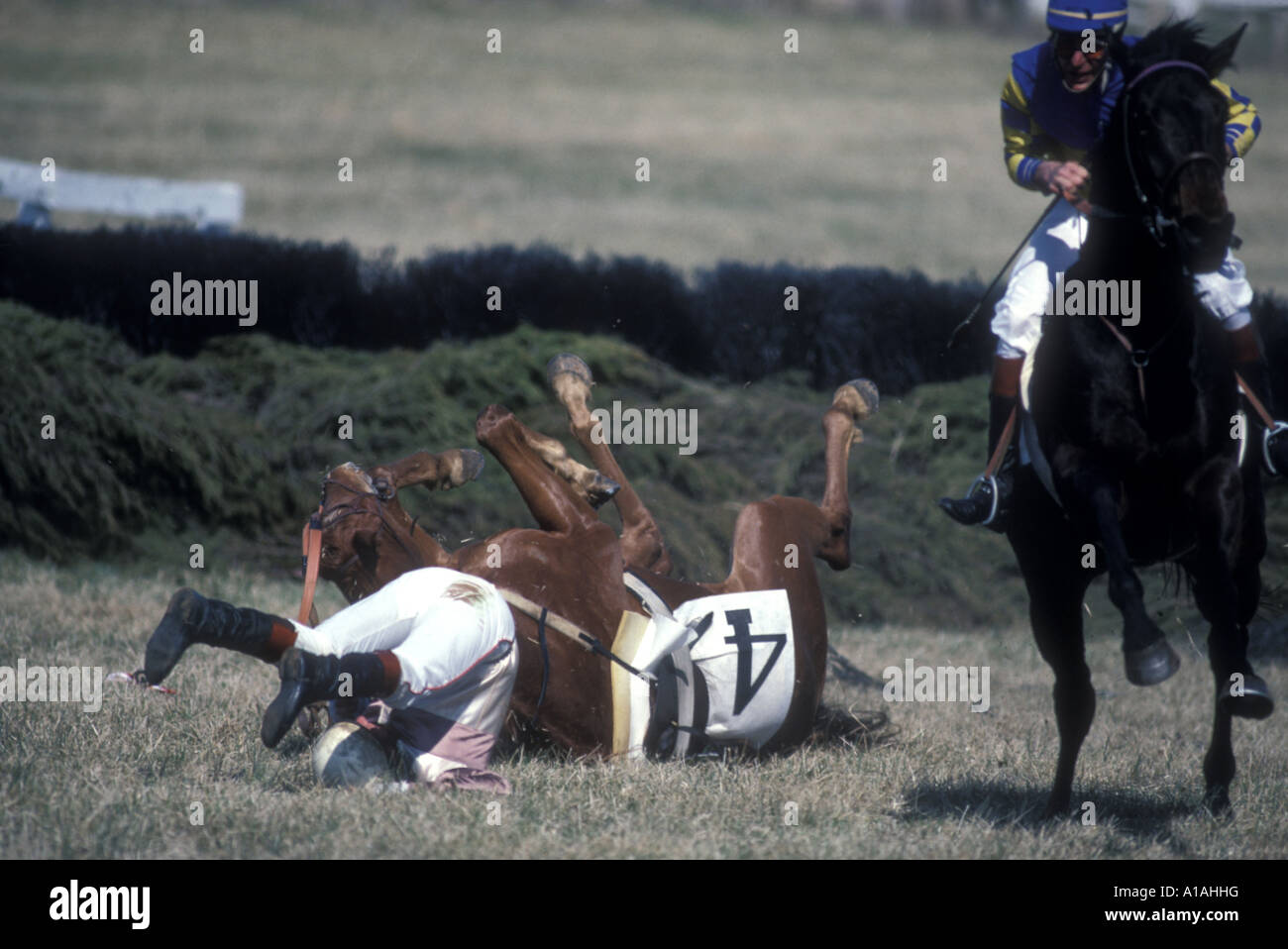The Consequences of a Steeplechase Fall

A steeplechase fall, with its inherent risks, can have a wide range of consequences for runners, impacting both their physical well-being and their competitive prospects. These falls can lead to a spectrum of injuries, from minor sprains to severe fractures, and can also significantly affect a runner’s mental state. The immediate and long-term consequences of a fall can vary greatly depending on the severity of the injury and the individual’s ability to recover.
Potential Injuries, Men’s steeplechase fall
Steeplechase falls, with their combination of high speed and obstacles, pose a significant risk of injury. The potential injuries can range from minor sprains to severe fractures.
- Sprains and Strains: These are common injuries that occur when ligaments or tendons are stretched or torn. Ankle sprains, knee sprains, and hamstring strains are frequently seen in steeplechase falls.
- Fractures: These are breaks in bones, and they can occur in various parts of the body, including the ankles, legs, wrists, and even the collarbone.
- Concussions: These are brain injuries that can result from a direct blow to the head or a sudden impact. Concussions can lead to headaches, dizziness, and memory problems.
- Dislocations: These occur when a joint is forced out of its normal position. Shoulder dislocations, elbow dislocations, and knee dislocations are possible after a fall.
- Soft Tissue Injuries: These can include lacerations, abrasions, and bruises. The impact of a fall can cause significant damage to the skin and underlying tissues.
Psychological Impact
A steeplechase fall can have a profound psychological impact on a runner’s confidence and performance.
- Fear and Anxiety: The experience of falling can lead to fear and anxiety about future races, particularly when approaching water jumps or other obstacles. This fear can hinder a runner’s ability to focus and perform at their best.
- Loss of Confidence: A fall can damage a runner’s confidence, especially if it leads to a significant injury. It can take time to regain the mental strength and belief in one’s abilities after a setback.
- Performance Anxiety: The fear of falling again can lead to performance anxiety, affecting a runner’s ability to relax and focus on their race strategy. This anxiety can manifest as muscle tension, increased heart rate, and difficulty concentrating.
Immediate and Long-Term Consequences
The immediate and long-term consequences of a steeplechase fall can significantly impact a runner’s career and future prospects.
- Missed Races and Training: A fall can lead to missed races and training sessions, disrupting a runner’s preparation and potentially affecting their performance in upcoming competitions.
- Rehabilitation: Depending on the severity of the injury, rehabilitation can take weeks, months, or even years. This process can be physically and mentally demanding, requiring dedication and perseverance.
- Career Setbacks: A serious injury sustained in a fall can significantly set back a runner’s career, particularly if it prevents them from competing at their previous level. It may require a significant amount of time and effort to return to their former fitness and performance.
- Psychological Impact on Future Performance: The fear of falling again can linger, affecting a runner’s mental state and potentially hindering their future performance. This fear can manifest as hesitation, reluctance to take risks, and a decline in overall confidence.
Preventing and Mitigating Steeplechase Falls: Men’s Steeplechase Fall

Steeplechase, with its unique combination of speed, endurance, and obstacle negotiation, presents inherent risks of falls. These falls can range from minor stumbles to serious injuries, impacting both athlete performance and overall well-being. To minimize these risks, athletes need to prioritize preventative measures and implement strategies that mitigate the potential for falls. This involves a comprehensive approach that encompasses training, technique, and equipment.
Training Techniques to Reduce Fall Risk
Effective training plays a crucial role in reducing the risk of falls in steeplechase. By incorporating specific drills and exercises into training programs, athletes can improve their balance, agility, and obstacle clearance skills, thereby minimizing the likelihood of stumbling or losing their footing.
- Balance and Coordination Drills:
– Single-leg squats, lunges, and balance board exercises enhance balance and proprioception, improving stability and reducing the risk of falls.
– Agility drills like ladder drills, cone drills, and footwork exercises enhance quick reaction times and coordination, crucial for navigating the unpredictable nature of the steeplechase course. - Obstacle Clearance Training:
– Practicing obstacle clearance techniques with proper form is paramount. This involves mastering the jump over the water barrier, ensuring a smooth, controlled landing.
– Athletes should focus on maintaining a consistent stride rhythm and approach, minimizing the risk of misjudging the barrier and stumbling.
– Implementing drills that simulate the water jump, such as jumping over hurdles or ropes at varying heights, allows athletes to refine their technique and build confidence in obstacle clearance. - Strength and Conditioning:
– Building strength in the core, legs, and ankles is crucial for maintaining stability and preventing falls.
– Incorporating exercises like squats, lunges, deadlifts, and plyometrics enhances lower body strength and power, improving the ability to absorb impact and maintain balance.
Role of Proper Equipment
The right equipment can significantly impact the severity of falls and potential injuries. Footwear and apparel specifically designed for steeplechase play a crucial role in minimizing the risks associated with falls.
- Footwear:
– Steeplechase-specific footwear provides a combination of cushioning, stability, and grip essential for navigating the challenging terrain and obstacles.
– Features like a reinforced toe box, a durable outsole with multi-directional lugs, and a snug fit help minimize the risk of blisters, slippage, and injuries during falls.
– Athletes should consider the terrain and weather conditions when selecting footwear, opting for spikes for optimal grip on wet or muddy surfaces and flat-soled shoes for dry conditions. - Apparel:
– Breathable and moisture-wicking apparel is crucial for maintaining comfort and preventing overheating during the race.
– Tight-fitting shorts or pants prevent chafing and provide freedom of movement.
– Athletes should also consider wearing protective gear like elbow pads and knee pads, especially during training, to minimize the risk of injuries during falls.
Men’s steeplechase fall – That steeplechase fall was proper brutal, like a right banana skin moment. I reckon the poor bloke was feeling pretty knackered afterwards. Anyway, on a completely different note, I was thinking of giving my old leather chair a makeover.
If you’re thinking of doing the same, you can check out this guide on painting leather chairs. Back to the steeplechase, I bet that guy’s got some serious aches and pains today.
Right, so you’ve got a bloke doing the steeplechase, right? He’s flying over those hurdles, looking like a proper legend. But then, bam! He goes down harder than a dropped ice cream cone. You’d think he’d be knackered, but he’s up in a flash, like he’s got a spring in his step.
Maybe he’s got one of those American Leather living chairs at home that’s got him feeling comfy and ready for anything. Anyway, he’s back on his feet, and he’s determined to finish the race. He’s a proper warrior, that fella.